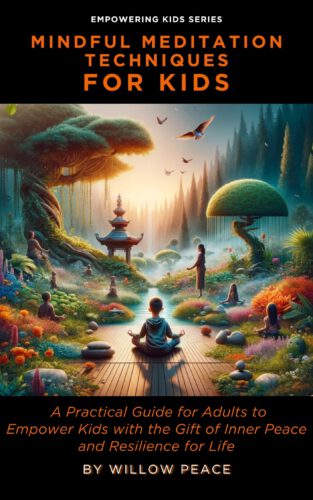Guest Writer for Wake Up World
As the temperatures drop and the winter jackets emerge, many people will be diagnosed with seasonal depression, also called seasonal affective disorder (SAD). Amazingly, as the weather changes, up to 10% of people living in northern latitudes will be categorized as depressed.[1]
But what exactly is seasonal depression? How is it different from our natural reactions to the shifting seasons?
Considered an independent disorder,[2] seasonal depression is a label given to people who report feeling sluggish, having difficulty concentrating, craving carbs, and withdrawing from social activities (aptly called “hibernating”).[3] Risk factors for seasonal depression include living far from the equator, having a history of depression, and being female (thanks, scientists), as women are four times more likely to be diagnosed with seasonal depression than men – and then put on antidepressants to mask these symptoms.
But what if these “symptoms” of seasonal depression are simply messages? Why is it a disease to feel a meaningful shift when winter comes?
Modern living fails to recognize the cyclical nature of life that was celebrated for centuries by our tribal ancestors. In our 3G-enabled state of constant distractions and accessibility, we’re expected to always be on. We ask ourselves to exhibit the same level of energy and productivity whether it’s summer or winter, and we wonder why it’s tough to conjure up motivation when the sun sets early. This expectation of constant high-functioning is a masculine energy that can lead to burnout. And when we don’t feel like maintaining our zillions of commitments or feel overwhelmed by everyone’s perfect online lives, we’re at a high risk of being diagnosed with depression.
But what if we recognize that the universe is governed by cycles: within the day, within the month, and within the year? Amazingly, even our bodies are governed by cycles. You’ve likely heard of circadian rhythms, the idea that our hormones and blood pressure fluctuate in harmony with the sun,[4] and women’s cycles align with the moon. Maintenance of these cycles is so important that their disruption can lead to neurodegenerative diseases[5] and mood disorders like depression.[6],[7]
Even our individual cells operate in a cyclical nature, orchestrated by clock genes.[8] Recent studies have shown that our immunity is different depending on the time of day;[9] a wound at night heals slower than a daytime wound.[10] And thyroid functioning also slows in the winter,[11] which is not a pathology – just a response to the season. This thyroid slowing might explain the carb cravings and lowered energy that are diagnostic criteria for seasonal depression.
Recognizing that winter is just part of the cycle, can we reframe our experience of this season? What if we considered winter as a sacred time of hibernation and preparation for the rebirth of spring? We can bring a sensuality to this experience of winter by embracing wintry rituals of coziness and honoring our feelings. For example, we can:
- Peacefully light candles when darkness falls
- Designate a special warm blanket
- Enjoy a nourishing warm beverage like golden milk
- Connect to the sunrise with a pre-dawn meditation practice, called sadhana, which has incredible mental, emotional, and physiological benefits
- Honor our desires for rest and reflection and say no to unappealing parties or participating in cookie swaps, without guilt.
We can see winter as a meaningful and purposeful season, not just a time that’s the same as the rest of the year but without the luxuries of sun and heat.
The invention of seasonal depression is yet another piece of evidence of evolutionary mismatch. Our ideas of hyperproductivity and detachment from the environment fundamentally mismatch with the natural changes that occur in our bodies when the seasons shift. But we have the opportunity to reclaim our sense of ownership over this process, and we can choose to honor our feelings to manifest exactly what we want. This winter, ask why you are feeling what you are feeling when ‘undesired’ emotions come up. Instead of suppressing these feelings with holiday libations, medications, or deafening busyness, allow yourself to ruminate on how you can respond to these feelings and support greater alignment in your life.
References:
[1] https://www.ncbi.nlm.nih.gov/pmc/articles/PMC3004726/
[2] http://ajp.psychiatryonline.org/doi/pdf/10.1176/appi.ajp.2009.09020188
[3] https://www.nimh.nih.gov/health/topics/seasonal-affective-disorder/index.shtml
[4] http://www.sciencedirect.com/science/article/pii/S1525505008001625
[5] https://www.nature.com/articles/nrn2868
[6] http://www.sciencedirect.com/science/article/pii/S0272735806000651
[7] https://academic.oup.com/jcem/article/90/5/2522/2836608
[8] https://www.ncbi.nlm.nih.gov/pmc/articles/PMC1114487/
[9] https://www.ncbi.nlm.nih.gov/pmc/articles/PMC3315694/
[10] http://stm.sciencemag.org/content/9/415/eaal2774.short
[11] https://www.ncbi.nlm.nih.gov/pubmed/7714307
Originally published at kellybroganmd.com and reproduced here with permission.
Recommended articles by Kelly Brogan, M.D.
- Adverse Effects of Antipsychotic Drugs in Children
- Your Microbiome on Drugs
- Oops! The Brain DOES Have An Immune System
- Is Your Prescription Drug Causing Your Depression?
- Contraception Depression: Can the Pill Affect Your Mood?
- A Time for Rain: Teaching Our Children About Sadness
- Psychobiotics: Bacteria for Your Brain?
- Vitamin B12 Deficiency: A Trigger for Depression and Anxiety?
- The Violence-Inducing Effects of Psychiatric Medication
- Fear Is The Sickness
About the author:
Kelly Brogan, M.D. is a holistic women’s health psychiatrist, author of the NY Times Bestselling book, A Mind of Your Own, the children’s book A Time For Rain, and co-editor of the landmark textbook, Integrative Therapies for Depression. She completed her psychiatric training and fellowship at NYU Medical Center after graduating from Cornell University Medical College, and has a B.S. from M.I.T. in Systems Neuroscience. She is board certified in psychiatry, psychosomatic medicine, and integrative holistic medicine, and is specialized in a root-cause resolution approach to psychiatric syndromes and symptoms. She is on the board of GreenMedInfo, Price-Pottenger Nutrition Foundation, Functional Medicine University, Pathways to Family Wellness, Mindd Foundation, SXSW Wellness, Chickasaw Nation Wellness, and the peer-reviewed, indexed journal Alternative Therapies in Health and Medicine. She is Medical Director for Fearless Parent and a founding member of Health Freedom Action. She is a certified KRI Kundalini Yoga teacher and a mother of two. For more articles, sign up for her newsletter at kellybroganmd.com.

If you've ever found value in our articles, we'd greatly appreciate your support by purchasing Mindful Meditation Techniques for Kids - A Practical Guide for Adults to Empower Kids with the Gift of Inner Peace and Resilience for Life.
In the spirit of mindfulness, we encourage you to choose the paperback version. Delve into its pages away from screen glare and notifications, allowing yourself to fully immerse in the transformative practices within. The physical book enriches the learning process and serves as a tangible commitment to mindfulness, easily shared among family and friends.
Over the past few years, Wake Up World has faced significant online censorship, impacting our financial ability to stay online. Instead of soliciting donations, we're exploring win-win solutions with our readers to remain financially viable. Moving into book publishing, we hope to secure ongoing funds to continue our mission. With over 8,500 articles published in the past 13 years, we are committed to keeping our content free and accessible to everyone, without resorting to a paywall.








